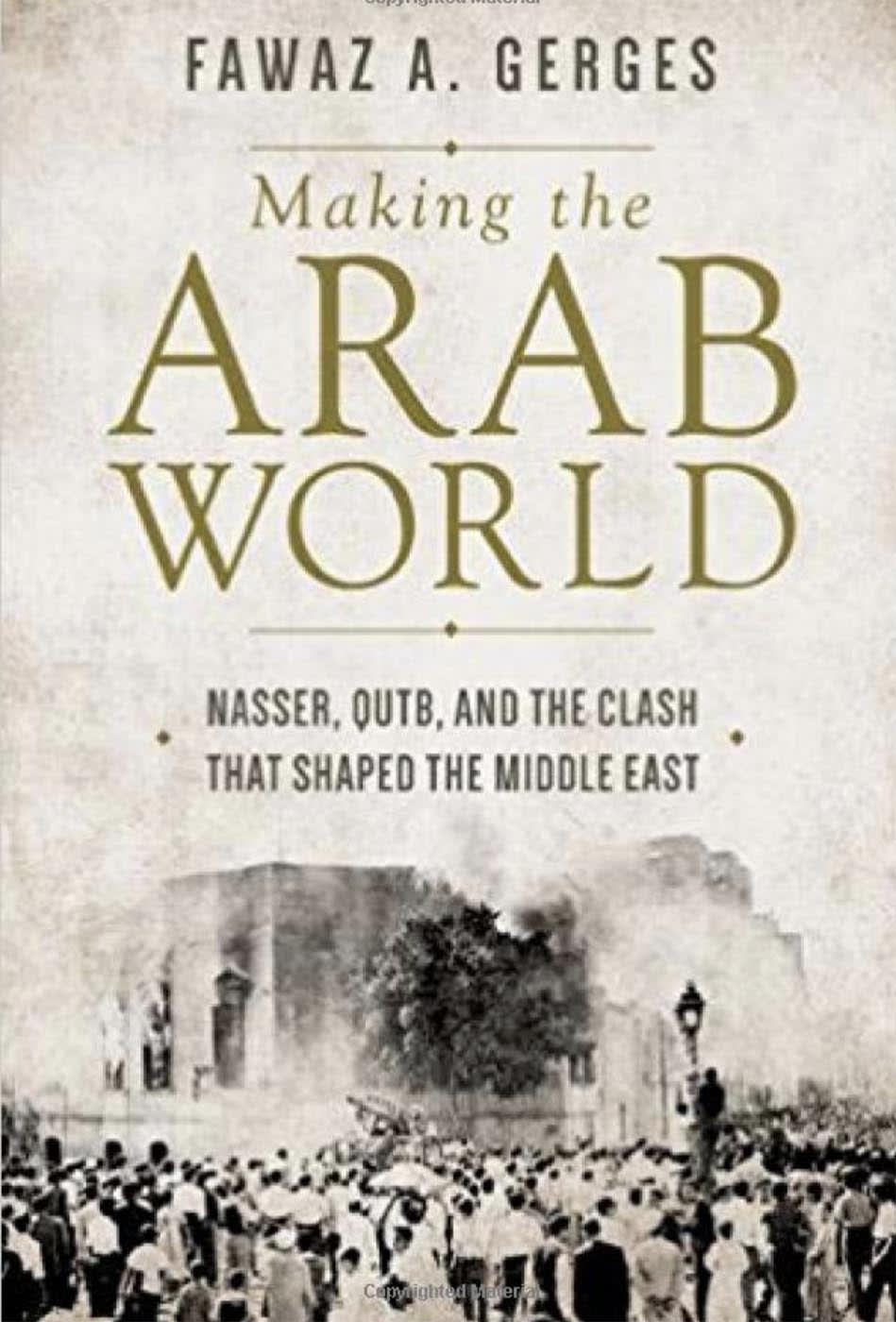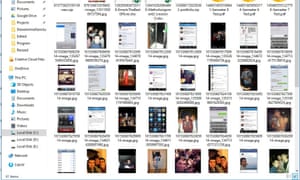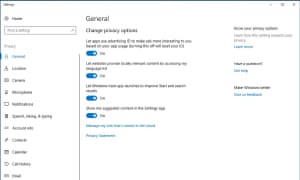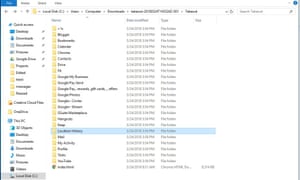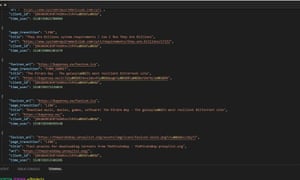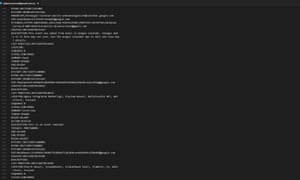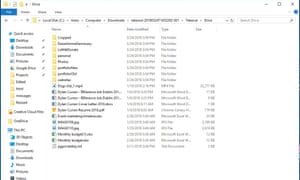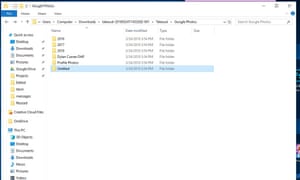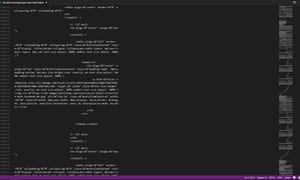When agents fail 4 polygraphs and are still on the payroll with security clearance, is the FBI working well? When agents create fake Facebook accounts to leak information, are things working well at the Bureau? When agents fail to stop Omar Mateen, the San Bernardino, California terrorist, are things broken at the FBI? What about the early complaints by parents to the FBI about the rapist/molester Larry Nasser and not getting a call for over a year? Conditions are the Bureau good?
The Michael Horowitz Inspector General report is due at any time. What is unclear is how the FBI will be summarized and why? Was there a full mission change to find domestic terrorists over robbery cases? Did RICO cases get sidelined for the sake of sex traffickers or narcotic cases?
Inspector General reports provide the reason for the investigation and the recommendations to cure the systems. Will that be the case when it comes to hacking over locating foreign spies in our country? Is crime in America so overwhelming that the FBI cannot keep pace and local law enforcement is lagging behind as well including the fact that technology is advancing such that cases should be easier?
You be the judge as you read the following:
The FBI Is in Crisis. It’s Worse Than You Think
TIME: In normal times, the televisions are humming at the FBI’s 56 field offices nationwide, piping in the latest news as agents work their investigations. But these days, some agents say, the TVs are often off to avoid the crush of bad stories about the FBI itself. The bureau, which is used to making headlines for nabbing crooks, has been grabbing the spotlight for unwanted reasons: fired leaders, texts between lovers and, most of all, attacks by President Trump. “I don’t care what channel it’s on,” says Tom O’Connor, a veteran investigator in Washington who leads the FBI Agents Association. “All you hear is negative stuff about the FBI … It gets depressing.”
Many view Trump’s attacks as self-serving: he has called the renowned agency an “embarrassment to our country” and its investigations of his business and political dealings a “witch hunt.” But as much as the bureau’s roughly 14,000 special agents might like to tune out the news, internal and external reports have found lapses throughout the agency, and longtime observers, looking past the partisan haze, see a troubling picture: something really is wrong at the FBI.
The Justice Department’s Inspector General, Michael Horowitz, will soon release a much-anticipated assessment of Democratic and Republican charges that officials at the FBI interfered in the 2016 presidential campaign. That year-long probe, sources familiar with it tell TIME, is expected to come down particularly hard on former FBI director James Comey, who is currently on a high-profile book tour. It will likely find that Comey breached Justice Department protocols in a July 5, 2016, press conference when he criticized Hillary Clinton for using a private email server as Secretary of State even as he cleared her of any crimes, the sources say. The report is expected to also hit Comey for the way he reopened the Clinton email probe less than two weeks before the election, the sources say.
The report closely follows an earlier one in April by Horowitz, which showed that the ousted deputy director of the FBI, Andrew McCabe, had lied to the bureau’s internal investigations branch to cover up a leak he orchestrated about Clinton’s family foundation less than two weeks before the election. (The case has since been referred to the U.S. Attorney’s office in Washington, D.C., for potential prosecution.) Another IG report in March found that FBI retaliation against internal whistle-blowers was continuing despite years of bureau pledges to fix the problem. Last fall, Horowitz found that the FBI wasn’t adequately investigating “high-risk” employees who failed polygraph tests.
There have been other painful, more public failures as well: missed opportunities to prevent mass shootings that go beyond the much-publicized overlooked warnings in the Parkland, Fla., school killings; an anguishing delay in the sexual-molestation probe into Olympic gymnastics doctor Larry Nassar; and evidence of misconduct by agents in the aftermath of standoffs with armed militias in Nevada and Oregon. FBI agents are facing criminal charges ranging from obstruction to leaking classified material. And then there’s potentially the widest-reaching failure of all: the FBI’s miss of the Russian influence operation against the 2016 election, which went largely undetected for more than two years.
In the course of two dozen interviews for this story, agents and others expressed concern that the tumult is threatening the cooperation of informants, local and state police officials, and allies overseas. Even those who lived through past crises say the current one is more damaging. “We’ve seen ups and downs, but I’ve never seen anything like this,” says Robert Anderson, a senior official at the FBI who retired in 2015.
The FBI’s crisis of credibility appears to have seeped into the jury room. The number of convictions in FBI-led investigations has declined in each of the last five years, dropping nearly 11% over that period, according to a TIME analysis of data obtained from the Justice Department by researchers at Syracuse University. “We’ve already seen where the bad guys and witnesses look at those FBI credentials, and it might not carry the same weight anymore,” says O’Connor.
Indeed, public support for the FBI has plunged. A PBS NewsHour survey in April showed a 10-point drop–from 71% to 61%–in the prior two months among Americans who thought the FBI was “just trying to do its job” and an 8-point jump–from 23% to 31%–among those who thought it was “biased against the Trump Administration.”
The FBI, of course, continues to do good work. On April 25, local authorities in Sacramento and the FBI announced the dramatic arrest of the Golden State Killer. That same day it helped bust 39 people in Pennsylvania in a cocaine-trafficking investigation, 14 prison employees in South Carolina in a bribery case and two men in New Jersey in a $5.3 million tax-evasion probe. Assistant FBI Director William F. Sweeney Jr., who runs the New York field office and oversaw the April 9 raid against Trump’s personal lawyer Michael Cohen, says his agents’ response to the turmoil has been to “double down and [say], ‘Hey, we’re gonna keep on moving.’”
Some question whether the FBI has gotten too big and has been asked to do too many things. After 9/11, then FBI director Robert Mueller, who is now the special counsel leading the Russia probe, made massive new investments in counterterrorism and intelligence, shifting resources and investigative focus from white collar crime and bank robberies.
Many of the bureau’s woes developed on Comey’s 3½-year watch. They extend beyond the most visible controversies, like the Clinton email and Russia investigations, to his costly confrontation with Apple over unlocking an iPhone used by one of the terrorists in the San Bernardino, Calif., shooting in 2015, and beyond. Critics say Comey’s penchant for high-profile moral fights has, ironically, undermined the bureau’s reputation. Trump himself has used that line of argument to challenge the FBI.
Democrats have questioned the integrity of the bureau as well, with Clinton and her aides claiming Comey and the FBI helped tip the election to Trump. But the biggest difference between past crises and the current one, according to virtually everyone interviewed for this article, is the President. Trump has continually attacked the integrity of the institution and its leaders, alleging not just incompetence but bad faith in the commission of justice. Ronald Hosko, who retired in 2014 after 30 years at the bureau, compares the moment to a wildfire, saying Trump “is either the spark that creates the flames, or he’s standing there with a can of gas to stoke the flames.”
The bureau’s current director, Christopher Wray, recently said his first priority is to “try to bring a sense of calm and stability back to the bureau.” But the FBI is facing one of the greatest tests of its 110 years. In the coming months, it must fix a litany of internal problems, fend off outside attacks on its trustworthiness and pursue investigations touching on a sitting President, at the same time a growing number of Americans are asking themselves: Can we trust the FBI?
Last May, McCabe, then the FBI’s deputy director, sat down at the table in his seventh-floor office for a meeting with two agents from the inspections division. The agents had some questions about the Clinton Foundation leak just before the election. It was a quick meeting. McCabe, an FBI veteran who rose through the ranks over a 21-year career, told them he had “no idea” where the leak came from. The agents left after just five minutes or so, according to the Inspector General’s April 13 report.
McCabe had offered that same basic assurance months earlier to his boss, then director Comey, investigators said, and had angrily lit into FBI officials under him, suggesting the Clinton leak had come from their offices and telling one senior agent in Washington to “get his house in order.” But as it turned out, McCabe knew exactly where the leak had come from. He personally authorized it, Horowitz’s investigators found, to counter charges that he favored Clinton. (His wife received $467,500 from the PAC of a Clinton ally, then Virginia governor Terry McAuliffe, in a failed 2015 bid for state office.)
The McCabe findings have shaken the FBI. The bureau has massive power, and as a result, it has strict rules. Lying to investigators is considered a dire breach in an organization built on trust. The referral to the U.S. Attorney’s office, which emerged a week after the report was released, could result in charges against McCabe of making a false sworn statement. He has challenged the findings, disputing even the most basic elements, like how many people were in the room. The IG said it did not find many of his objections credible, with some elements contradicted by notes taken contemporaneously by an agent. McCabe previously called his firing part of a “war on the FBI” and the Russia investigation. But viewed against the backdrop of other Horowitz reports, McCabe’s alleged rule-breaking looks like part of a much larger problem.
In September, Horowitz found that bureau investigators had allowed employees with dubious polygraph results to keep their top-secret clearances for months or even years, posing “potential risks to U.S. national security.” In one instance, an FBI IT specialist with top-secret security clearance failed four polygraph tests and admitted to having created a fictitious Facebook account to communicate with a foreign national, but received no disciplinary action for that. In late 2016, Horowitz found that the FBI was getting information it shouldn’t have had access to when it used controversial parts of the Patriot Act to obtain business records in terrorism and counterintelligence cases.
Just as troubling are recent FBI missteps not yet under the IG’s microscope. At 2:31 p.m. on Jan. 5, the FBI’s round-the-clock tip center in West Virginia received a chilling phone call. The caller gave her name and said she was close to the family of an 18-year-old in Parkland, Fla., named Nikolas Cruz. Over 13 minutes, she said Cruz had posted photos of rifles he owned and animals he mutilated and that he wanted “to kill people.” She listed his Instagram accounts and suggested the FBI check for itself, saying she was worried about the thought of his “getting into a school and just shooting the place up,” according to a transcript of the call.
The FBI specialist checked Cruz’s name against a database and found that another tipster had reported 3½ months earlier that a “Nikolas Cruz” posted a comment on his YouTube channel saying, “I’m going to be a professional school shooter.” But neither tip was passed on to the FBI field agents in Miami or local officials in Parkland. After Cruz allegedly killed 17 people with an AR-15 rifle at his old school just six weeks later, the bureau admitted that it had dropped the ball and ordered a full review. “You look at this and say, ‘You’ve got to be kidding me,’” says Anderson, the former FBI official.
The Parkland shooting was only the latest in a string of devastating misses. After Omar Mateen shot and killed 49 people at the nightclub Pulse in Orlando in June 2016, the FBI said it had investigated him twice before on terrorism suspicions, but shut the inquiries for lack of evidence. The year before, after Dylann Roof shot to death nine African-American parishioners at a South Carolina church, the FBI acknowledged that lapses in its gun background-check system allowed him to illegally buy the .45-caliber handgun he used in the massacre. And in 2011, the FBI received a tip from Russian intelligence that one of the Boston Marathon bombers had become radicalized and was planning an overseas trip to join radical Islamic groups. The FBI in Boston investigated him but found no “nexus” to terrorism.
FBI agents at the damaged rear wall of the Pulse nightclub, where Omar Mateen killed 49 people in June 2016
Joe Raedle—Getty Images
The Orlando shooting provoked more second-guessing in late March, when the shooter’s widow, Noor Salman, was acquitted on charges of aiding and abetting him and obstructing justice. The jury foreman pointed to inconsistencies in the FBI’s accounts of the disputed admissions that agents said Salman had made, according to the Orlando Sentinel. The judge also scolded the government after an FBI agent contradicted the government’s earlier claims that Salman and Mateen had cased the club.
The concerns about FBI testimony in a major terrorist prosecution underscore a larger question: Are people less likely to believe what the bureau says these days? In January, a federal judge threw out all the criminal charges against renegade Nevada cattleman Cliven Bundy, his two sons and a supporter who had been in an armed standoff over unpaid grazing fees. Judge Gloria Navarro accused the government of “outrageous” and “flagrant” misconduct, citing failures by both prosecutors and the FBI to produce at least 1,000 pages of required documents. The judge said the FBI misplaced–or “perhaps hid”–a thumb drive revealing the existence of snipers and a surveillance camera at the site of the standoff.
A related case in Oregon, growing out of the 2016 takeover of a wildlife refuge by Bundy’s sons and their followers, has not gone well for the FBI either. An agent at the scene, W. Joseph Astarita, is now charged with five criminal counts after prosecutors say he falsely denied shooting twice at an occupation leader who was fatally shot by police, who said he appeared to be reaching for his handgun during a roadside encounter. The Bundy sons and five supporters who helped in the takeover were found not guilty of conspiracy and weapons charges, in another jarring setback for the government.
Some legal experts and defense advocates see the string of recent not guilty verdicts as a sign that jurors and judges are less inclined to take what the FBI says in court at face value. Data examined by TIME support that conclusion. The number of convictions in FBI-led investigations dropped last year for the fifth consecutive year–from 11,461 in 2012 to 10,232, according to Syracuse University data, which was obtained under Freedom of Information Act requests.
Moreover, TIME’s analysis shows a surprisingly low rate of success for the thousands of cases the FBI investigates and sends to the Justice Department for possible prosecution. Over that same time period, the Justice Department has ultimately won convictions in fewer than half the cases the FBI referred for prosecution, with a conviction rate of 47% last year, the data showed. That fell well below the average of 72% for all agencies. Prosecutors themselves have rejected many of the FBI’s referrals before they ever got to court. The bureau’s low success rate in these cases has remained largely unchanged in recent years.
Federal prosecutors still win the bulk of the thousands of cases they choose to bring based on FBI investigations. Justice Department spokesman Ian Prior says a variety of factors could play into the drop in prosecutions and convictions over the last five years, including “de-emphasizing” some crimes under Obama-era policies and cutbacks in prosecutors in recent years. Prior says that “judging the performance of the FBI based on a minuscule sample of cherry-picked cases” ignores its thousands of annual convictions.
Gina Nichols, a nurse in Minnesota, says she never had strong impressions one way or the other about the FBI until her daughter Maggie Nichols, who was a member of the national gymnastics team, reported three years ago that team physician Larry Nassar had molested her. Gina waited anxiously for the FBI to contact her and interview Maggie. But no one did so for nearly a year as the case languished among different FBI field offices in Indianapolis, Detroit and Los Angeles. Nassar is believed to have molested dozens of additional victims over the course of that year. “It makes you sick,” Gina tells TIME. “I have a child who was sexually abused for 2½ years by an Olympic doctor, and the FBI did nothing.”
The FBI has opened an internal inquiry to determine why the Nassar investigations appear to have dragged on for so long. John Manly, a Southern California lawyer representing many of the women, says he is angry that no one from the FBI has contacted the victims to explain the delay. “Knowing that the best law-enforcement agency in the world knew exactly what he was up to and did nothing–I can’t explain that to them,” Manly says. “You’ve got people who were really hurt here, so fix it,” he says.
Perhaps the easiest problems to address are the internal lapses. Experts say putting assets and management attention back to work on cyber, counterintelligence and traditional crime after Mueller shifted them to counterterrorism would help. “There’s an overextension of the mission,” says Brian Levin, a professor of criminal justice at California State University, San Bernardino, who has worked with the FBI. Most of Horowitz’s reports include measures the FBI can take to address their problems, including stricter rules for investigating polygraph test failures and training to protect whistle-blowers.
A failure of imagination is harder to fix. Mueller’s Russia probe has found that Moscow’s operation against the 2016 election first got under way in 2014, but the FBI failed to grasp the scope and danger of what was unfolding. The bureau missed the significance of the damaging 2015 hack of the DNC database. And when the Russian operation began to heat up in the summer of 2016, the FBI was always a step behind the Russians, struggling to understand intelligence reports they were getting about possible connections between Moscow and Trump aides. The bureau also sat on the disputed “dossier” prepared by former British intelligence officer Christopher Steele.
A report released on April 27 by Republicans on the House Intelligence Committee found that the FBI was slow to confront the election meddling, especially in its failure to notify U.S. victims of Russian hacking quickly enough. The committee also charged that the bureau’s decision to surveil former Trump campaign adviser Carter Page was influenced by politics. At the same time, the GOP has pointed to text messages between FBI special agent Peter Strzok and FBI lawyer Lisa Page, which were critical of Trump–as well as many Democrats–to argue the bureau is fundamentally biased.
FBI Director Wray says the bureau has started “specific activities” to prevent election meddling by Moscow, but outsiders worry that the U.S. remains vulnerable this fall and beyond.
The most important thing the FBI can do to fix itself? Follow its own rules. In his handling of the Clinton email probe ahead of the 2016 election, Comey acted without telling the Justice Department what he planned to do. Comey is expected to come under fire in the upcoming IG report for breaking with Justice Department rules and norms by assuming authority usually held by prosecutors and speaking in public about a case that did not produce criminal charges, sources with knowledge of the report tell TIME. He will likely also be criticized for weighing in so close to the election in a way that could impact the outcome, sources familiar with the investigation say.
On his book tour, Comey has defended his decisions as the best way out of a bad situation. Facing what he called “a series of no-win decisions,” Comey says he did what he thought was necessary and transparent to protect the integrity of both the FBI and the legal process in such a high-profile case.
As he faces the crises at the FBI, Wray has told his senior aides to “keep calm and tackle hard.” Asked if recent misconduct cases concern Wray, FBI spokeswoman Jacqueline Maguire said the bureau’s 36,000 employees “are held to the highest standards of conduct–but as in any large organization, there may be occasions when an employee exercises poor judgment or engages in misconduct.” While she declined to discuss specific cases, Maguire said claims of misconduct are “taken seriously [and] investigated thoroughly,” leading to discipline when needed.
At FBI headquarters, agents and supervisors say they are keeping their heads down and focusing on their investigations. But the building is literally crumbling around them–Comey kept in his office a slab of concrete that had fallen off the side. Designs for a new complex were scrapped in February. Visible across Pennsylvania Avenue from the main entrance, with J. Edgar Hoover’s tarnished name above it, is the gleaming, gold-plated sign on the newly renovated Trump International Hotel.
Trump’s attacks on the FBI have been filled with inaccuracies and innuendo, wrongly claiming on Twitter, for instance, that McCabe was in charge of the Clinton email investigation. Trump makes a point of praising rank-and-file agents, but his punches have landed inside the FBI and out. Some worry the damage may take years to repair. “I fear Trump’s relentless attacks on the institution are having an effect on the public’s confidence in the FBI,” says Matthew S. Axelrod, a senior Justice Department official in the Obama Administration.
Mueller may play an outsize role in how his old agency gets through the current crisis. If the special counsel finds that Russia did collude with members of the Trump campaign–the central question in his investigation–and any perpetrators are charged and found guilty in court, it would rebut Trump’s charges of a “witch hunt.” If Mueller finds no evidence of collusion, or declines to make it public, it would open the door for Trump and his campaign to paint the FBI as a band of partisan hacks with a reputation, as he has tweeted, “in tatters.”
There may be no immediate way to fix a place with as many missions and masters as the FBI. One official, asked what it would take for the FBI to move past all the controversy, paused and said simply, “Time.” Many hope that the extraordinary confluence of events that drew the FBI into the 2016 election will prove to be, as Comey called it, “a 500-year flood” that won’t repeat itself anytime soon.
Others are doubtful. Jeffrey Danik, a retired FBI agent in Florida who now works with whistle-blowers at the bureau, blames the state of affairs on “a severe lack of leadership” and transparency at headquarters in owning up to recent mistakes. Those damaging failures, he says, “have just about pushed our incredible organization over the brink.” For now, everyone inside and out who cares about the reliability of law enforcement in America is left hoping that the bureau has at least started on the road back.



